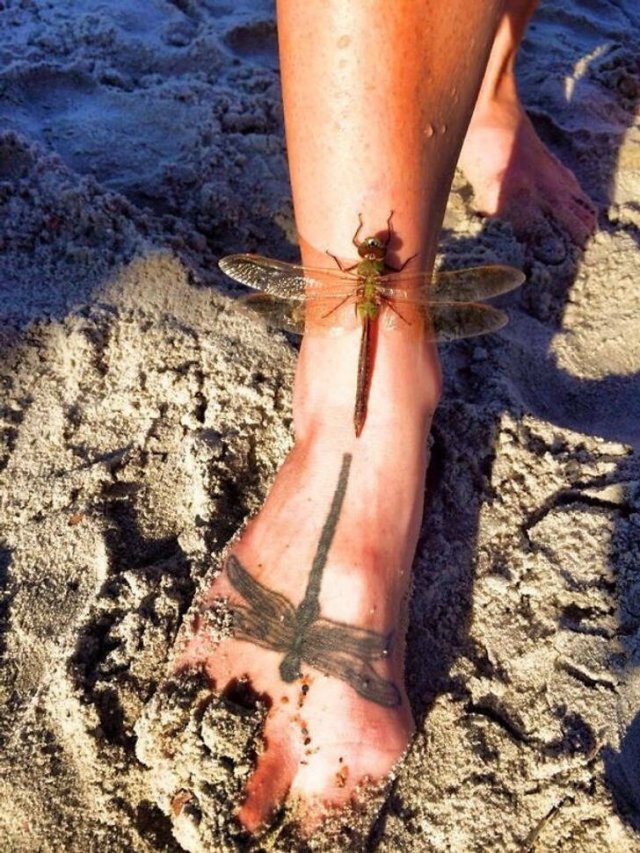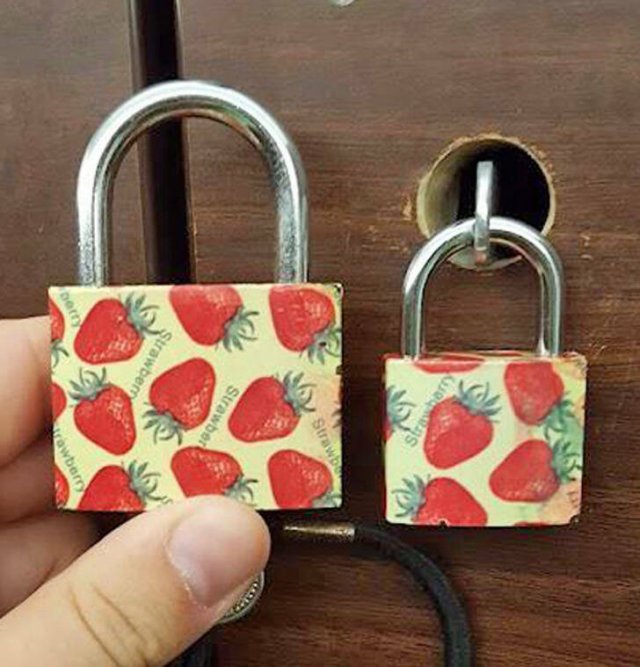The newest registered user is Menupanda
Our users have posted a total of 44848 messages in 6607 subjects

WORLD CLOCK
INFO VINE * 50 Historic Sites Throughout Latin America *
Valley of the Sun Casual Club :: WORDS , FACTS , DATES , GAMES & TRIVIA & HISTORY :: INFORMATION VINE
 INFO VINE * 50 Historic Sites Throughout Latin America *
INFO VINE * 50 Historic Sites Throughout Latin America *

Photo Courtesy: [Wikimedia Commons]
Before the arrival of Europeans, what is now Latin America was a diverse and multicultural region filled with massive cities, colossal pyramids, and elegant temples. Among the ancient civilizations that lived in Latin America were the Incas, the Mayans, and the Aztecs.
While many of these civilizations were almost or entirely wiped out due to disease and other negative effects of colonization, they left behind hundreds of monuments and structures. These places are popular tourist sites and an incredible way to experience the brilliance and ingenuity of these ancient civilizations firsthand. Do you want to know more about these ancient civilizations and what they built? Here are 50 historic sites throughout Latin America.
Teotihuacan
Located in the heart of Mexico, the ancient city of Teotihuacan was once the sixth-largest city in the world. At its peak, the city was inhabited by at least 125,000 people and was the largest city on the American continents before the arrival of Columbus and other Europeans.

Photo Courtesy: [Ralf Roletschek/Wikimedia Commons]
Teotihuacan spanned eight square miles and was filled with temples, residences, and monuments, many of which are still intact. Though the ethnicity of the city's inhabitants has been subject to much debate, certain aspects of the Teotihuacanos resemble other ancient civilizations from Latin America, including the Nahuas and the Aztecs.
The Pyramid Of The Sun
While most people associate pyramids with Egypt, many pyramids have been discovered throughout Latin America. The Pyramid of the Sun is the largest structure in Teotihuacan and is thought to have been built around 200 A.D.

Photo Courtesy: [Mariordo/Wikimedia Commons]
For comparison, the Pyramid of the Sun stands at a height of 246 feet, making it a little over half as tall as the Great Pyramid of Giza. The pyramid gets its name not from the Teotihuacanos but from the Aztecs, who visited the site following its abandonment. Though much about the structure's purpose is still unknown, it is believed to have been of great religious significance to the inhabitants of Teotihuacan.
The Temple Of The Feathered Serpent
The Temple of the Feathered Serpent is another pyramid located in Teotihuacan. The Feathered Serpent was an ancient deity that appeared in the belief systems of many other cultures. It was also known under a variety of names, including the Quetzalcoatl and the Kukulkan.

Photo Courtesy: [Diego Delso/Wikimedia Commons]
One of the most interesting aspects of the Temple of the Feathered Serpent is the large number of burials that were found at the site in the 1980s. At least 200 men and women are buried at the pyramid, with the number of men being higher than the number of women. Like the pyramid itself, these burials are believed to originate from sometime between 150 and 200 A.D.
The Palace Of Quetzalpapálotl
The Palace of Quetzalpapálotl is part of a complex of ruins in Teotihuacan and is believed to have been the home of an important dignitary, such as a high-ranking religious leader. Historians have determined this based on the high quality of the art found in the palace, as well as its location. The site where the palace is located was originally developed sometime between 250 to 300 A.D.

Photo Courtesy: [Armineaghayan/Wikimedia Commons]
Around 450 to 500 A.D., the palace and its accompanying structures were built over the existing ones. The site was discovered by Jorge Acosta, a Mexican archaeologist, in 1962.
The Pyramid Of The Moon
The Pyramid of the Moon is the second-largest of the pyramids at Teotihuacan after the Pyramid of the Sun. Built sometime between 100 and 450 A.D., it functioned as a site for sacrificial rituals and as a burial ground for those who were sacrificed.

Photo Courtesy: [Gorgo/Wikimedia Commons]
A total of seven layers make up the Pyramid of the Moon, with the second through sixth levels serving as the burial sites. At the top of the pyramid is a platform which is dedicated to a Teotihuacan deity that archaeologists refer to as the "Great Goddess". A similar goddess was worshipped by the Navajo and Pueblo tribes.
Uxmal
Uxmal is an ancient Mayan city located in the state of Yucatán in southern Mexico. It is known for its large, decorated buildings and paved roads which connect them. Historians are unsure as to when the city was first settled or how many people lived there.

Photo Courtesy: [Dennis Jarvis/Wikimedia Commons]
Despite the Spanish colonizing much of the surrounding area, Uxmal was left largely untouched and is believed to have been inhabited as late as the 1550s. The city is in considerably better condition than the majority of other Mayan cities, partially due to the restorative work that has been done there. In 1996, Uxmal was even designated a U.N.E.S.C.O. World Heritage Site.
The Pyramid Of The Magician
Also known as the Pyramid of the Dwarf and the Pyramid of the Soothsayer, the Pyramid of the Magician is the tallest structure in Uxmal. Located in the heart of the ancient city, the pyramid is one of its primary tourist attractions and is part of a sound and light show presented every evening.

Photo Courtesy: [runt35/Wikimedia Commons]
According to legend, a Mayan god named Itzamna constructed the pyramid in a single night using his great magical powers. Work on the Pyramid of the Magician began around 560 A.D. and continued over the next four centuries. Since the mid-1800s, various restoration projects have been undertaken to maintain the structure.
The Governor's Palace
The Governor's Palace is a wide building decorated with elegant mosaics and situated on a large platform. The structure served as a shrine to the Mayan gods and contained several sculptures of Chaac, who was the god of rain.

Photo Courtesy: [Dennis Jarvis/Wikimedia Commons]
Interestingly, the entrance to the Governor's Palace is perfectly aligned with the planet Venus. Above the entrance are eight sculpted serpents, each with two heads.
Chichen Itza
This Mayan city is also located in Yucatán and its name translates to "at the mouth of the well of the Itza". The Itza were a prominent group of people who lived in ancient times and held much power over the northern Yucatán Peninsula.

Photo Courtesy: [Dronepicr/Wikimedia Commons]
Chichen Itza is one of the largest Mayan cities ever built and is currently one of the most visited archaeological sites in the country. A wide range of architectural styles can be found in its structures, implying that it had a diverse populace.
The Temple Of Kukulcán
The Temple Of Kukulcán is a large pyramid located in the center of Chichen Itza. Known to the Spanish as El Castillo, which means "the castle", it was built between the 8th and 12th centuries and was a temple to the serpent god Kukulcán.

Photo Courtesy: [Luka Peternel/Wikimedia Commons]
While the Kukulcán has remained a popular tourist attraction over the years, no one is allowed to climb the ancient structure due to safety concerns. Despite this, there is still much for visitors to see on the outside of the pyramid.
El Caracol
El Caracol, which means "the snail", is the name given by the Spanish to this structure at Chichen Itza. The name is in reference to the circular staircase inside the tower which is situated at the top of the structure.

Photo Courtesy: [Daniel Schwen/Wikimedia Commons]
While historians have not definitively settled on what purpose this building served, it is widely believed to have been an ancient observatory. Because of the general flatness of the surrounding landscape, someone looking out from the tower would have had an unobstructed view of the Yucatán Peninsula.
El Tepozteco
This archaeological site is located in Morelos, a landlocked state in the southern part of central Mexico. On the site is a small pyramid dedicated to the Aztec god Tepoztēcatl, whose cult was based there.

Photo Courtesy: [Juan Pablo M. Bastida/Wikimedia Commons]
Tepoztēcatl was the god of fertility, drunkenness, and an alcoholic beverage called pulque. Produced from the sap of the agave plant, it has been a part of life in central Mexico for over a thousand years, though its popularity decreased after beer was introduced into the region.
Palenque
By the 7th century A.D., the Mayan city-state of Palenque was home to a thriving and artistic populace. The site where Palenque is located is in Chiapas, the southernmost state in Mexico. Between approximately 226 B.C. and 799 A.D, the inhabitants of Palenque built many ornate palaces, temples, and residences.

Photo Courtesy: [BIOLOGO JORGE AYALA/Wikimedia Commons]
One particularly interesting aspect of Palenque is its history of female rulers. While most of the authority figures in the city-state were men, several women did rule over the centuries. Among them was Lady Sak Kuk, who came to power in 612 A.D. and reigned for at least three years before she willingly abdicated and was succeeded by her son.
The Temple Of The Inscriptions
The Temple of the Inscriptions is the largest of the pyramids at Palenque and was completed soon after 683 A.D. The pyramid was finished under the rule of Kʼinich Kan Bahlam II, whose father Pakal had initiated its construction. Pakal's tomb, which includes an elaborately carved sarcophagus, is located inside the pyramid. The hieroglyphic inscriptions from which the pyramid gets its name are on the inner walls of the structure and were mostly completed while Pakal was still alive.

Photo Courtesy: [Lousanroj/Wikimedia Commons]
One of the most notable artifacts found inside the pyramid was a jade death mask belonging to Pakal. It was believed that when he died, Pakal would go to Xibalba, which is the Mayan underworld. To accompany him, five men and women were sacrificed and buried at the entrance of the tomb. Their skeletons have since been recovered by archaeologists.
The Temple Of The Cross
The Temple of the Cross is part of a complex of temples situated in the southeastern region of Palenque. Of the three main temples in the complex, the Temple of the Cross is the largest. It was also built under the supervision of Kʼinich Kan Bahlam II, whose rule lasted from 684 to 702 A.D.

Photo Courtesy: [Jan Harenburg/Wikimedia Commons]
In the 16th century, Spanish explorers arrived in present-day Chiapas. By this time, the Mayans had abandoned the temple and the complex surrounding it. Since 1940, there have been extensive efforts to excavate, restore, and maintain the site, which now receives thousands of visitors yearly.
Tikal
Located in the rainforests of Guatemala is an ancient Mayan city called Tikal. It was the capital city of one of the most powerful Mayan kingdoms between approximately 200 and 900 A.D.

Photo Courtesy: [Bjørn Christian Tørrissen/Wikimedia Commons]
Compared to some other Mayan cities, historians have been able to uncover a great deal of information about Tikal, including its long line of dynastic rulers. To contemporary audiences, Tikal is best known as the filming location for the planet Yavin 4 in the original Star Wars.
The North Acropolis
When people hear the word "acropolis", they often think of the famous Acropolis of Athens in Greece. Because "acropolis" simply means "high city" in Greek, there are many acropolises around the world. One of these is the North Acropolis in Tikal.

Photo Courtesy: [Simon Burchell/Wikimedia Commons]
The North Acropolis played an important role in burials and funerary activity for over a thousand years, before temples started to be built in other parts of the city in the late 7th century. Multiple temples, such as the one pictured above, and burial chambers have been found by archaeologists, including those of several Mayan kings.
The Central Acropolis
Even after the North Acropolis was no longer in use, the Central Acropolis continued to be an important part of life in Tikal until approximately the mid-10th century. Whereas the North Acropolis was used for funerary purposes, the Central Acropolis served as the royal residence.

Photo Courtesy: [Simon Burchell/Wikimedia Commons]
Excavation of the site began in 1962 under an archaeologist named Peter Harrison. Work on the site continued into the early 2000s, with it remaining incompletely excavated as late as 2003.
Mundo Perdido
The name of this ancient ceremonial complex means "lost world" in Spanish. The structures at the Mundo Perdido began to be built around 600 B.C. and were subsequently reconstructed on multiple occasions, increasing in both height and complexity over time.

Photo Courtesy: [Simon Burchell/Wikimedia Commons]
The most impressive structure at the Mundo Perdido is the stepped pyramid which is pictured above. It is about 102 feet high and its base measures 221 feet in width. Like many of the structures around it, the pyramid has been rebuilt several times throughout its history. The version that is standing today was built around 250 A.D. and is the tallest of the five renditions of the pyramid.
Xochicalco
Xochicalco is an archaeological site located about 76 miles outside of Mexico City in the state of Morelos. While the architecture and artistry of Xochicalco resemble that of the Mayans, who founded the city around 650 A.D., it also appears to have been influenced by the Teotihuacanos and the Matlatzinca. The Matlatzinca resided in the Toluca Valley, which is located in the central highlands of Mexico.

Photo Courtesy: [Maxtreiber/Wikimedia Commons]
Like many other ancient Latin American settlements, Xochicalco has a temple dedicated to the Feathered Serpent deity. Xochicalco was populated by somewhere between 10,000 to 15,000 people and is believed to have been an important trading and defense site. Around 900 A.D., the city was destroyed. Its ruins were later described by Antonio Alzate in 1777 and featured in an engraving in 1791.
Calakmul
Situated in the thick jungles of Campeche in southeastern Mexico, just 22 miles north of the border with Guatemala, is Calakmul. The largest structures at this Mayan site were built sometime between 550 and 300 B.C. Calakmul appears to have peaked around the 7th century which immediately preceded its decline in the 8th century.

Photo Courtesy: [PashiX/Wikimedia Commons]
Calakmul had a long-running and well-documented rivalry with Tikal, which resulted at least in part due to competition for resources. However, historians believe that ideological differences may have also factored into the rivalry. In 1931, biologist Cyrus L. Lundell was flying over the Mexican jungle when he discovered the structures of the ancient city, such as the temple pictured above.
Machu Picchu
Established in the 15th century by the Inca Empire, Machu Picchu is an expansive citadel located on a steep mountain ridge in Peru. Though its exact purpose is unknown, historians believe it served as an estate for the Inca emperor Pachacuti.

Photo Courtesy: [Pedro Szekely/Wikimedia Commons]
The city was abandoned during the Spanish conquest of the Inca Empire and was unknown to the outside world for centuries. In 1911, American explorer Hiram Bingham introduced Machu Picchu to the world upon discovering it with the help of some Peruvian locals. In the years since the once overgrown site has been extensively restored.
The Gate Of The Sun
The Gate of the Sun is a part of Tiwanaku, an archaeological site in western Bolivia near the Peruvian border. The culture that lived there flourished around 500-950 A.D. and created some elaborate stoneworks within that time.

Photo Courtesy: [Mhwater/Wikimedia Commons]
The gate, which was carved from a single block of stone, is about 9.8 feet tall and is estimated to weigh about 10 tons. It was found face-down by explorers in the mid-1800s and is believed to have been moved there from another site.
Tulum
This Mayan site is located on the Yucatán Peninsula in Quintana Roo, the easternmost state in Mexico. Tulum thrived between the 13th and 15th centuries and was one of the last cities to be built by the Mayans.

Photo Courtesy: [Popo le Chien/Wikimedia Commons]
The Mayans' way of life in Tulum was severely disrupted by the arrival of Europeans and their various diseases. It is believed that there was much loss of life in Tulum due to these illnesses, resulting in the city's eventual abandonment. Because it is one of the most well-preserved coastal Mayan cities, it is now a major tourist attraction.
Ciudad Perdida
The name Ciudad Perdida means "lost city" in Spanish. This terraced city is nestled away in the mountains of northern Colombia and can only be reached by climbing a series of 1,200 stone steps, which are in the thick of the jungle.

Photo Courtesy: [Dwayne Reilander/Wikimedia Commons]
The city is believed to have been established around 800 A.D. Ciudad Perdida was rediscovered in 1972 by looters, who began selling its gold figures and ceramics on the black market. This helped the Colombian Institute of Anthropology learn of the site's existence, resulting in the first archaeological expedition to the site in 1976.
Moray
Situated west of the village of Maras, Peru is an Inca ruin known as Moray. The ground at this site has a series of unique circular indentations, which are believed to have served some kind of agricultural purpose.

Photo Courtesy: [Philipp Weigell/Wikimedia Commons]
The largest of these round cavities is about 98 feet deep. Given the changes in temperature from the top to the bottom of these indentations, they may have been used similarly to a greenhouse.
Tambomachay
This archaeological site is believed to originate from the Inca Empire and is located near the present-day city of Cusco, Peru. The exact purpose of the site is unclear, though it has been suggested that it served some kind of military or religious purpose.

Photo Courtesy: [Diego Delso/Wikimedia Commons]
A network of canals, aqueducts, and waterfalls run through the site, leading some to believe that it was a bath or spa resort. Because of this, the Spanish name for the site is El Baño del Inca, which translates to "the bath of the Inca".
Pinkuylluna
Named after the mountain on which it was built, Pinkuylluna is a complex of ancient storehouses located in the vast Cusco region of Peru. Though it has been determined that it was built by the Incas, the exact time of its construction is unknown.

Photo Courtesy: [Stevage/Wikimedia Commons}
Southwest of the site is the town of Ollantaytambo, which also contains Inca ruins. The storehouses in Pinkuylluna were built by the Incas who once lived in Ollantaytambo, who used them to store their grain.
Copán
In western Honduras, fairly close to the Guatemalan border, is the Mayan city of Copán. It was built in a lush valley and is only a mile away from the town of Copán Ruinas, which is often filled with tourists journeying to the site.

Photo Courtesy: [Talk2winik/Wikimedia Commons]
Because of its southerly location, Copán had few other Mayan settlements nearby it. The Mayan kingdom that lived here flourished from the 5th to 9th centuries, but the site was gradually abandoned. By the time the Spanish arrived in the 16th century, only pockets of agricultural communities remained in the valley.
Mitla
Mitla is one of the most important archaeological sites in the state of Oaxaca in southwestern Mexico. The valley was settled by the Zapotec sometime before 1000 A.D. and over time an entire city was built.

Photo Courtesy: [Dmitri Lytov/Wikimedia Commons]
The Zapotec gradually developed their own writing system, two different calendars, and advanced agricultural methods. The city contains unique decorative carvings that have yet to be found anywhere else in Mexico, and still has some of the original paint on its walls, as can be seen in the photograph above.
Kuélap
The Chachapoyas were a civilization that lived on the eastern slopes of the Andes Mountains in northern Peru. In the 5th century A.D., they began to inhabit a steep mountain ridge that looked out onto the Utcubamba Valley. On this ridge, they built the walled city of Kuélap, which is shown in the image below.

Photo Courtesy: [Elemaki/Wikimedia Commons]
Prior to the arrival of the Spanish, the Chachapoyas were conquered by the immensely powerful Inca Empire. By 1570, the city had been abandoned and as a result, fell into disrepair and became overgrown. In 1843, Kuélap was found by a judge named Juan Crisóstomo Nieto and has since been surveyed and excavated.
Pukará de Quitor
Pukará de Quitor is a walled city located near the town of San Pedro de Atacama, Chile. It was built around the 12th century and was ruled by the Incas until around the time of the Spanish Conquest.

Photo Courtesy: [Vessna/Wikimedia Commons]
Its fortress proved to be highly effective in protecting its population, successfully holding off the Spanish for over two decades. Unfortunately, the Spanish eventually took control of Pukará de Quitor and brought its people under their control. Though tourists cannot visit the city itself, they can still get an incredible view of it and the surrounding Atacama Desert from a nearby hill.
Choquequirao
Choquequirao is an Inca city that was established around the 15th century and is situated in the Vilcabamba mountain range in southern Peru. It is architecturally similar to Machu Picchu, which is located in the same general area.

Photo Courtesy: [Harley Calvert/Wikimedia Commons]
The buildings in Choquequirao are spread out over a wide area. For example, some of the ceremonial buildings are three hours away from the upper section of the complex. The site itself takes two days to reach on foot and has an elevation of over 10,000 feet.
Cahal Pech
In the Cayo District of Belize, not far from the town of San Ignacio, is Cahal Pech. It is believed that an elite Mayan family resided here as early as 1200 B.C.

Photo Courtesy: [Denis Barthel/Wikimedia Commons]
The earliest examples of pottery in western Belize have been recovered from Cahal Pech. For reasons unknown, the site was abandoned sometime after 800 A.D.
Altun Ha
Altun Ha is in Belize about 6.2 miles off the coast of the Caribbean Sea. The site occupies an area of roughly 3.1 square miles and is believed to have been very swampy before the arrival of Europeans.

Photo Courtesy" [Denis Barthel/Wikimedia Commons]
The site was founded around 900 B.C. and continued to be inhabited until approximately 1000 A.D. However, its peak was between 400 and 900 A.D., and it is from this period that historians have obtained most of their information about Altun Ha.
Ingapirca
Ingapirca contains the largest known Inca ruins in Ecuador and is located in the province of Cañar. An indigenous people called the Cañari originally occupied the area and later coexisted peacefully with the Incas once they moved into southern Ecuador.

Photo Courtesy: [Delphine Ménard/Wikimedia Commons]
The Temple of the Sun is the largest and most prominent building on the site and can be seen on the right of the photograph above. This building is elliptical in shape and is constructed around a single rock.
Caracol
This large Mayan site is located in the present-day Cayo District of Belize. It has been discovered that Caracol was inhabited as far back as 1200 B.C., and was of great political importance to the surrounding region.

Photo Courtesy: [Pgbk87/Wikimedia Commons]
Caracol expanded across more than 77 square miles. This is much larger than the area occupied by Belize City, which is the largest urban area in the country. Caracol also had a considerably larger population. As the Mayan civilization collapsed the site was gradually abandoned, with the last inhabitants leaving in 1050 A.D.
Xunantunich
Xunantunich is also located in the Cayo District of western Belize. In the Mayan language, its name translates to "Maiden of the Rock". It began to greatly expand starting around 600 to 670 A.D., and following a temporary abandonment around 750, experienced a major resurgence from around 780 to 890.

Photo Courtesy: [Denis Barthel/Wikimedia Commons]
At its peak, Xunantunich was the primary location in the region for cultural rites and ceremonies such as funerary practices. The tallest structure at the site was named "El Castillo" by the Spanish and is pictured above. It is also one of the tallest structures in Belize.
Lamanai
Lamanai is located in northwestern Belize and was also a major Mayan site. The city was first inhabited around the 16th century B.C. and was a focal point for the Mayan civilization from the 4th century B.C. until the 1st century A.D.

Photo Courtesy: [Martin Falbisoner/Wikimedia Commons]
The High Temple of Lamanai, which is pictured above, is believed to be over 2,000 years old and can still be climbed by tourists today. Two Roman Catholic churches were founded in Lamanai during the Spanish conquest of the Yucatán Peninsula, but these collapsed when a Mayan revolt caused the Spanish to leave.
Castillo De Teayo
Castillo De Teayo is an ancient city inhabited by the indigenous Huastec culture beginning in the 10th century A.D. It is located in the northern region of the state of Veracruz, Mexico.

Photo Courtesy: [HJPD/Wikimedia Commons]
The stepped pyramid from which the site gets its name is pictured above. Despite showing the influence of the Huastec culture, the structure is actually of Toltec origin. The Toltecs were another early Latin American civilization and were mainly based in the present-day state of Hidalgo.
Cañada De La Virgen
An indigenous people called the Otomi founded this site around 530 A.D. Cañada De La Virgen is located in the state of Guanajuato in central Mexico and consists of five groups of structures.

Photo Courtesy: [Erik Reinecke/Wikimedia Commons]
The House of the Thirteen Heavens, which is part of the first complex, is pictured above. The Sun, the Moon, and the planet Venus played important roles in Otomi culture. The civilization began to decline around the 10th century and by the mid-11th century, Cañada De La Virgen was completely abandoned.
Mayapan
Mayapan, as its name implies, was a Mayan city that was established before the arrival of European explorers. It has been estimated that 15,000 to 17,000 people once lived in the city.

Photo Courtesy: [Pavel Vorobiev/Wikimedia Commons]
From the 1220s to the 1440s, Mayapan was one of the chief cities on the Yucatán Peninsula and served as a political and cultural hub for the Mayans. Since 1939, the city has been surveyed and excavated on multiple occasions.
Tazumal
Tazumal is a complex of ancient Mayan buildings within the city of Chalchuapa, El Salvador. The primary structures at Tazumal were built sometime between 250 and 900 A.D.

Photo Courtesy: [Mariordo/Wikimedia Commons]
Beginning in 1942, an American archaeologist named Stanley Boggs began excavating the site. Archaeologists have since found a number of artifacts at Tazumal, including sculptures and gold ornaments.
Mixco Viejo
This Mayan archaeological site can be found in the Chimaltenango region of Guatemala. Mixco Viejo, also known as Jilotepeque Viejo, was the capital city of a Mayan people known as the Chajoma. It was inhabited until after the Spanish conquest of Guatemala, at which point it was permanently abandoned.

Photo Courtesy: [Fernando Reyes/Wikimedia Commons]
The city was inhabited until after the Spanish conquest of Guatemala, at which point it was permanently abandoned. Like so many other historic sites in Latin America, Mixco Viejo was later rediscovered and restored by archaeologists.
Yaxha
Yaxha is in the Petén Basin region of Guatemala and was once part of a major trade route. It has been estimated that there were as many as 42,000 people living there at one point.

Photo Courtesy: [Cafeyaxha/Wikimedia Commons]
Yaxha peaked during what is known as the Early Classic period, which lasted from around 250 to 600 A.D. After its decline, it was found by a German explorer named Teoberto Maler and later mapped in the 1930s.
Tenayuca
Tenayuca is believed to have been the first capital of the Chichimec, a group of nomadic indigenous tribes who migrated into the area. The site is a part of the Greater Mexico City area.

Photo Courtesy: [Maunus/Wikimedia Commons]
In the Nahuatl language, Tenayuca means "walled place". The site was occupied before the 1200s and was conquered by the Aztecs around 1434.
Sayil
Sayil is located on the Yucatán Peninsula and thrived for a relatively brief period. Agriculture played a key role in the lives of its inhabitants, and it appears that those with the most fertile lands had the most wealth. The ruins of the Palace of Sayil are shown in the photograph below.

Photo Courtesy: [Juan José Acevedo Góngora/Wikimedia Commons]
In 1843, the first illustrated account of Sayil was published, helping bring the site to international attention. Since 1996, Sayil has been part of a U.N.E.S.C.O. World Heritage Site.
Coricancha
Of the many temples erected by the Incas, Coricancha was the most important. The temple is located in Cusco, Peru, which was the capital of the Inca Empire. It now looks very different from other surviving Inca temples because it has a convent built on top of it.

Photo Courtesy: [Diego Delso/Wikimedia Commons]
The Convent of Santo Domingo was first completed in 1610 and had to be rebuilt following an earthquake in 1650. Much of the Inca temple was destroyed during the war with the Spanish, which made it a good foundation to build a newer structure on.
Coba
The largest network of raised Mayan roads radiates from Coba, which is located in Quintana Roo. At its peak, it is believed that there were as many as 50,000 people living in Coba.

Photo Courtesy: [O.Mustafin/Wikimedia Commons]
A modern settlement is located next to the ancient site and currently has over a thousand inhabitants. Despite the small population size of the surrounding area, Coba receives hundreds of thousands of visitors every year.
Bonampak
Bonampak is a historic Mayan site in Chiapas, Mexico. Though its size is not particularly remarkable, it has a series of inside murals which it is known for. The structures at Bonampak were built sometime between 580 to 800 A.D.

Photo Courtesy: [Dbannasch/Wikimedia Commons]
It is incredible to think of how long the ruins of these ancient Latin American civilizations have stood. The resilience that these historic sites have had over the centuries is impressive and a sign of how skilled their designers and builders were. Hopefully, these 50 historic sites and many others like them will continue to stand the test of time and be appreciated by archaeologists, academics, and adventurers from all over the world.
 Similar topics
Similar topics» INFO VINE * 50 Machines That Built America *
» INFO VINE * 50 Images That Show The Life And Career of America's Dad Bob Saget *
» INFORMATION VINE * 50 Great Historic Olympic Moments *.
» INFORMATION VINE * The History of The Dust Bowl In America *.
Valley of the Sun Casual Club :: WORDS , FACTS , DATES , GAMES & TRIVIA & HISTORY :: INFORMATION VINE

 Events
Events















































































» BEFORE & AFTER...2
» COSPLAY...2
» WEATHER...3
» HISTORY FACTS * How people escaped past the Berlin Wall *
» US TRIVIA QUIZ * Which of these sports was invented by a YMCA teacher? *
» US TRIVIA ANSWER PAGE
» MAY NATIONAL CELEBRATION DAYS MAY 8 2024
» MAY NATIONAL CELEBRATION DAYS MAY 7 2024
» AWE WITTLE PUPPIES BUNNIES & KITTIES...5
» GIRL FISHING...2
» GIRL FISHING
» HISTORY FACTS *Which President was at Lincoln's funeral? *
» MAY NATIONAL CELEBRATION DAYS MAY 6 2024
» AS ETASKI * Etaski just shared: "Eris Book Sale Today Only! My Website Status, etc." *